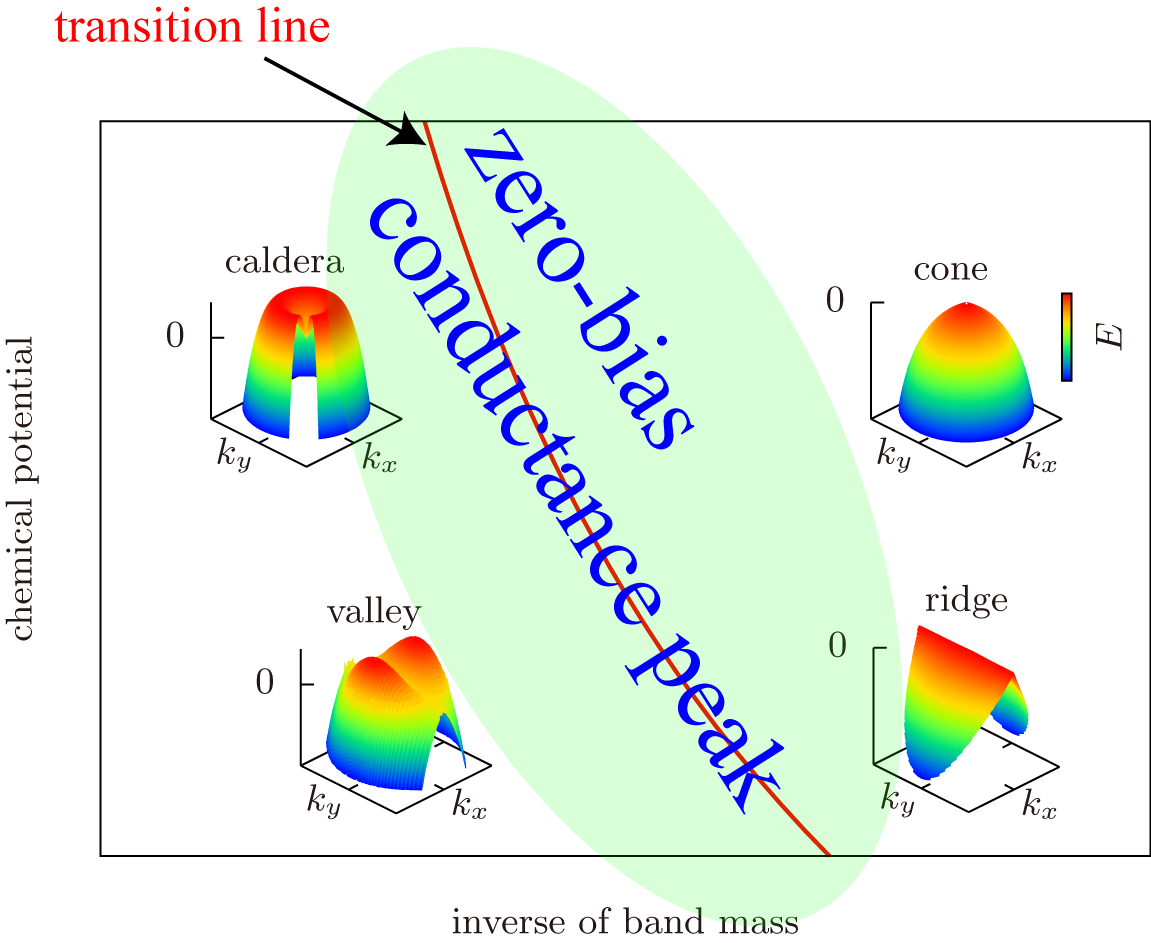
We have found a signal intrinsic to superconducting topological insulator. That is a zero-bias conductance peak. Let us suppose full-gap topological superconductors, which have gapless surface states. Full-gap topological superconductors are highly stable since it is topologically protected by energy scale of the superconducting gap. Before our study, chiral/helical topological superconductors in two dimension, and BW state realized in B-phase of 3He has been known. In the two-dimensional cases, zero-bias peaks always appear in tunneling conductances of normal metal / superconductor junctions. On the other hand, BW state does not show a zero-bias conductance peak. It is widely accepted that three-dimensional topological superconductors never yield a zero-bias conductance peak. In our study, however, we have revealed that three-dimensional superconducting topological insulators can show a zero-bias conductance peak in the vicinity of the surface-state transition line, as "critical phenomena". This transition is the structural transition of surface states in the momentum space, and stems from a remnant of surface states in the parent material: topological insulator. A zero-bias conductance peak in three spatial dimension is intrinsic to a superconducting topological insulator.

Fig: Evolution of the energy spectra of the surface states. For the larger chemical potential and inverse of band mass, the cone(ridge)-shaped energy spectrum of the surface states is realized in the full(nodal)-gap case. As the chemical potential and inverse of band mass decrease, the group velocity of the surface states decreases and vanishes at the transition point as denoted by the solid line in the figure. With further decreasing the parameters, the sign of the group velocity is reversed, thus, the twisted energy spectrum with caldera(valley)-shape is realized. In the vicinity of the transition line, the tunneling conductance shows a robust zero-bias peak. The insets show energy spectra of the surface states.